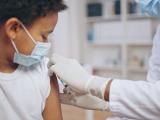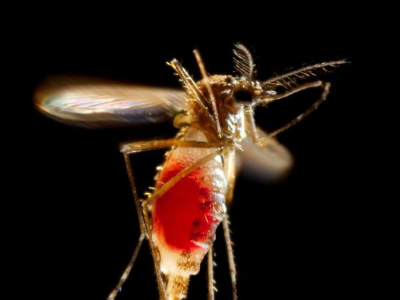Dec 19, 2006 (CIDRAP News) – Though the United States observed the fifth anniversary of the 2001 terrorist attacks this fall, the nation's public health emergency preparedness has improved slowly and remains inadequate, according to a report last week from the nonprofit organization Trust for America's Health (TFAH).
Jeff Levi, PhD, director of the Washington, DC-based TFAH, said in a Dec 12 press release that the Sept 11 and anthrax attacks and Hurricane Katrina were wake-up calls for the country to improve its weak preparedness systems. "But, across the board it is clear that we haven't learned the lessons from these tragedies—we are still vulnerable to what might come next," he said.
The 84-page report, released annually since 2003, assesses preparedness in each state and the District of Columbia, examines funding and accountability for preparedness, and offers recommendations to improve the country's ability to respond to a national health emergency.
How do states stack up?
In the state assessment, the TFAH report based scores on how states and some cities performed on 10 indicators of preparedness. The indicators, which change each year to reflect changing preparedness expectations and the availability of public state preparedness data, include:
- "Green" status for distribution of vaccines, antidotes, and medical supplies from the Strategic National Stockpile
- Sufficient Biosafety Level 3 laboratories
- Enough laboratory staff to do tests for anthrax or plague
- Year-round influenza testing
- Enough hospital beds for the first 2 weeks of a moderate pandemic flu outbreak
- Increased seasonal flu immunization rates among adults aged 65 and older
- Increased pneumococcal vaccination rates for seniors
- Use of a disease surveillance system that is compatible with the national system used by the Centers for Disease Control and Prevention (CDC)
- Enough registered nurses
- Steady or increased funding for public health programs from 2004-05 to 2005-06
Oklahoma scored highest, with 10, while California, Iowa, Maryland, and New Jersey were lowest, with scores of 4. More than half of states and the District of Columbia scored 6 or less. Kansas scored 9; states scoring 8 included Alabama, Kentucky, Michigan, Missouri, Montana, Nebraska, South Dakota, Texas, Virginia, Washington, West Virginia, and Wyoming. The report says that states with stronger surge capacities and immunization programs scored higher this year, since four indicators focused on these measures.
Since the first report was published, the number of states lacking the capacity to conduct lab tests during a bioterrorism emergency has shrunk from 44 to 11. The report applauds states for improving the public health workforce's ability to test for anthrax or plague, but the authors say the increase was due to employee cross-training rather than staffing increases.
One area of concern was flu vaccination rates for seniors. Thirty-five states maintained their rates and two increased their rates, but vaccination coverage for seniors fell in 13 states. "Seasonal flu vaccinations are viewed as a key part of planning for pandemic preparedness and other emergency responses that would require mass vaccination or distribution of medications," the report states.
Concerns about funding
Regarding federal efforts, the report raises strong concerns about funding. Congress has appropriated about $1 billion per year since 2002 to strengthen federal and state preparedness, but programs are already being cut, even before basic goals have been met, the report says.
"These cuts threaten to halt or even reverse progress that has been achieved," the report asserts.
TFAH also faults federal agencies such as the CDC for not establishing clearer standards for state preparedness capabilities, especially those that receive federal funds. Americans should have more information about how well their communities and states are prepared and how tax dollars are being spent, the authors write.
"Americans are not receiving the information they deserve to know about the safety of their own communities—or the standards they should hold the government accountable for," the report says.
To improve leadership and oversight of public health and bioterrorism preparedness, the Department of Health and Human Services (HHS) should have a single senior official assume responsibility for all public health programs, according to TFAH. Currently the duties are handled by separate HHS divisions. "No one official below the secretary has the authority to coordinate and synthesize a national preparedness strategy among agencies," the group says.
Some other recommendations include:
- Boosting surge capacity and the medical and public health workforce
- Expanding testing capabilities in public health labs
- Bolstering the Strategic National Stockpile of medications and vaccines
- Establishing a "state of emergency" health insurance benefit to encourage uninsured and underinsured people who are ill during an outbreak to seek medical care
Legislation passed by Congress just before it adjourned Dec 9 may help some of the problems cited in the in the TFAH report. The Pandemic and All-Hazards Preparedness Act (S 3678), signed into law by President George W. Bush today, addresses pandemic preparedness standards for states, calls for surveillance system improvements, and sets forth measures to improve medical surge capacity.
The legislation also requires HHS to establish an agency called the Biodefense Advanced Research and Development Authority (BARDA) to revitalize Project BioShield, established in 2004 to develop countermeasures against biological weapons and other threats.
The new legislation authorizes spending of $1.07 billion for BARDA for fiscal years 2006 through 2008. In August the Congressional Budget Office estimated that the remainder of the bill would cost $297 million in fiscal year 2007 and about $6 billion for the period 2007 through 2011.
See also:
TFAH news release, with links to complete report
http://healthyamericans.org/reports/bioterror06/
CIDRAP News story on TFAH 2005 report
CIDRAP News story on TFAH 2004 report
Dec 15 CIDRAP News story "Congress passes public health preparedness bill"


















